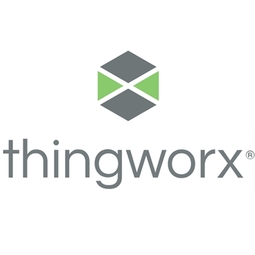Case Studies.
Add Case Study
Our Case Study database tracks 18,927 case studies in the global enterprise technology ecosystem.
Filters allow you to explore case studies quickly and efficiently.
Download Excel
Filters
-
(8)
- (5)
- (4)
-
(2)
- (1)
- (1)
- (1)
-
(2)
- (2)
- (1)
-
(2)
- (2)
- (1)
- (1)
- (1)
- (1)
- (1)
- View all 6 Industries
- (3)
- (1)
- (1)
- (1)
- (2)
- (1)
- (1)
- (1)
- (1)
- (8)
Selected Filters

|
Intelligent Farming with ThingWorx Analytics
Z Farms was facing three challenges: costly irrigation systems with water as a limited resource, narrow optimal ranges of soil moisture for growth with difficult maintenance and farm operators could not simply turn on irrigation systems like a faucet.
|
|

|
Data Gathering Solution for Joy Global
Joy Global's existing business processes required customers to work through an unstable legacy system to collect mass volumes of data. With inadequate processes and tools, field level analytics were not sufficient to properly inform business decisions.
|
|

|
Cutting-edge Predictive Analytics for HIROTEC Group
Hirotec needed to ensure continuous operations and to minimize unplanned downtime in its manufacturing facilities. Unplanned downtime is costly and compromises Hirotec's ability to deliver its goods to customers on time.
|
|

|
Use IoT to Improve Healthcare Business Outcomes
Before developing an IoT solution, ICURO hit a major roadblock with its healthcare platform. Limited data sharing between healthcare providers and insurance companies impeded effective communication, resulting in frequent duplication of efforts and making it difficult for each entity to deliver better care while maintaining reasonable costs. ICURO wanted to resolve these data sharing issues, they started developing tools and systems that connect products in meaningful ways, enabling both entities to collaborate more effectively.
|
|

|
Smart, Connected Applications Maximize Agricultural Business Performance
OnFarm needed to move quickly to capitalize on a significant "smart agriculture" opportunity to build connected applications and dashboards that captured and monitored sensors in the field and provided actionable data back to their customers. The overall solution OnFarm determined necessary was a set of "dashboard-driven connected services utilizing an IoT backend" that would accomplish several key things: • Easily collect data from incompatible sensors via wireless networks • Provide a means to integrate, analyze, and correlate different data sets of information into easily-understood and easy-to-customize reports leading to specific actionable outcomes • Manage end-user permissions, distribute reports and business intelligence through a customizable Web interface that would include dashboards, allowing custom organization of data applicable to the business employing OnFarm's suite of services
|
|

|
Leveraging the IoT to Gain a Competitive Edge in International Competition
Many large manufacturers in and outside Japan are competing for larger market share in the same space, expecting a growing demand for projectors in the areas of entertainment, which requires glamor and strong visual performance as well as digital signage that can attract people’s attention. “It is becoming more and more difficult to differentiate ourselves with stand-alone hardware products,” says Kazuyuki Kitagawa, Director of Service & Support at Panasonic AVC Networks. “In order for Panasonic to grow market share and overall business, it is essential for us to develop solutions that deliver significant added value.” Panasonic believes projection failure and quality deterioration should never happen. This is what and has driven them to make their projectors IoT-enabled. More specifically, Panasonic has developed a system that collects data from projectors, visualizes detailed operational statuses, and predicts issues and address them before failure occurs. Their projectors are embedded with a variety of sensors that measure power supply, voltage, video input/ output signals, intake/exhaust air temperatures, cooling fan operations, and light bulb operating time. These sensors have been used to make the projector more intelligent, automatically suspending operation when the temperature rises excessively, and automatically switching light bulbs. Although this was a great first step, Panasonic projectors were still not equipped with any capability to send the data over a network.
|
|

|
Delivers Seamless Scalability to IOTATOI
IOTATOI is a division of Power Agent Systems that has developed an edge server called the Universal Monitoring System (UMS). IOTATOI is using UMS as an edge tier data collector to monitor backup battery arrays in manufacturing, mines, and chemical plants. This experience with battery backups led IOTATOI to expand the system to any condition that can be monitored by sensors such as vibration, heat, temperature, and flow. IOTATOI found they needed to move from their original middleware to something that would allow greater scalability and to also present information in a much broader way allowing them to dynamically look at the information and perform benchmarking analysis, feeding the data into analytics engines and creating a much more actionable view.
|
|

|
ThingWorx Delivers Business Transformation to Sysmex
With a mature business comprising connected field instruments for remote monitoring, Sysmex realized that the next step in order to transform their business would be to unlock more value from their data. The only way they could outpace their competitors would be to deliver higher quality customer service and improve their internal operational efficiency.
|
|

